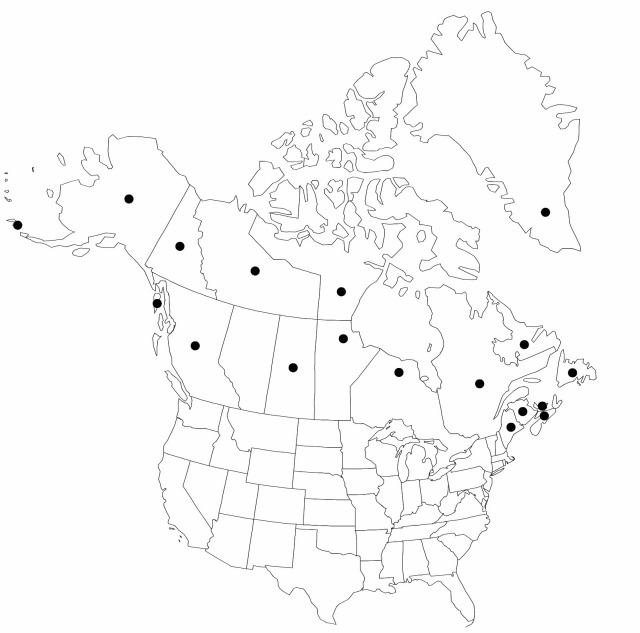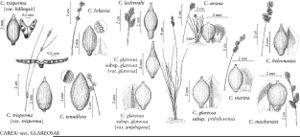Carex mackenziei
in V. L. Komarov et al., Fl. URSS 3: 183. 1935.
Plants loosely cespitose; rhizomes short; stolons present, often long. Culms sometimes curved, slender, 10–40 cm. Leaves: sheaths graybrown to pale-brown abaxially, inner band thin, hyaline, often red tinged, summit prolonged, concave; ligules as long as wide; blades yellowish green to pale gray-green, flat, 5–20 cm × 1–3 mm, subequal or shorter than culms, soft. Inflorescences 1.5–5 cm × 7–12 mm; proximal bracts scalelike, sometimes bristlelike, shorter than spikes. Spikes 3–6, gynecandrous, proximal spikes separate, usually 1–1.5 cm apart, distal approximate, individually distinct, containing 5–15 (–20) perigynia, oblong, 5–15 × 4–6 mm; terminal spike conspicuously staminate at base, long-clavate, 10–20 mm. Pistillate scales pale redbrown with lighter center and narrow hyaline margins, ovate, ± equaling, concealing perigynia, apex obtuse. Perigynia appressed-ascending, gray-green, often reddish dotted, often pale-brown in age, finely several-veined, oblongelliptic, 2.5–3.3 × 1.5–2 mm, widest near middle, coriaceous; beak entire or with few marginal teeth. Achenes pale-brown to graybrown, oblong, 1.75–2 × 1.25–1.5 mm, dull. 2n = 64.
Phenology: Fruiting Jun–Aug.
Habitat: Coastal and estuarine marshes, mostly brackish soils, seashores
Elevation: 0–600 m
Distribution

Greenland, B.C., Man., N.B., Nfld. and Labr., N.W.T., N.S., Ont., P.E.I., Que., Sask., Yukon, Alaska, Maine, Europe, Asia
Discussion
Selected References
None.
Lower Taxa
"shortened" is not a number.No values specified.
